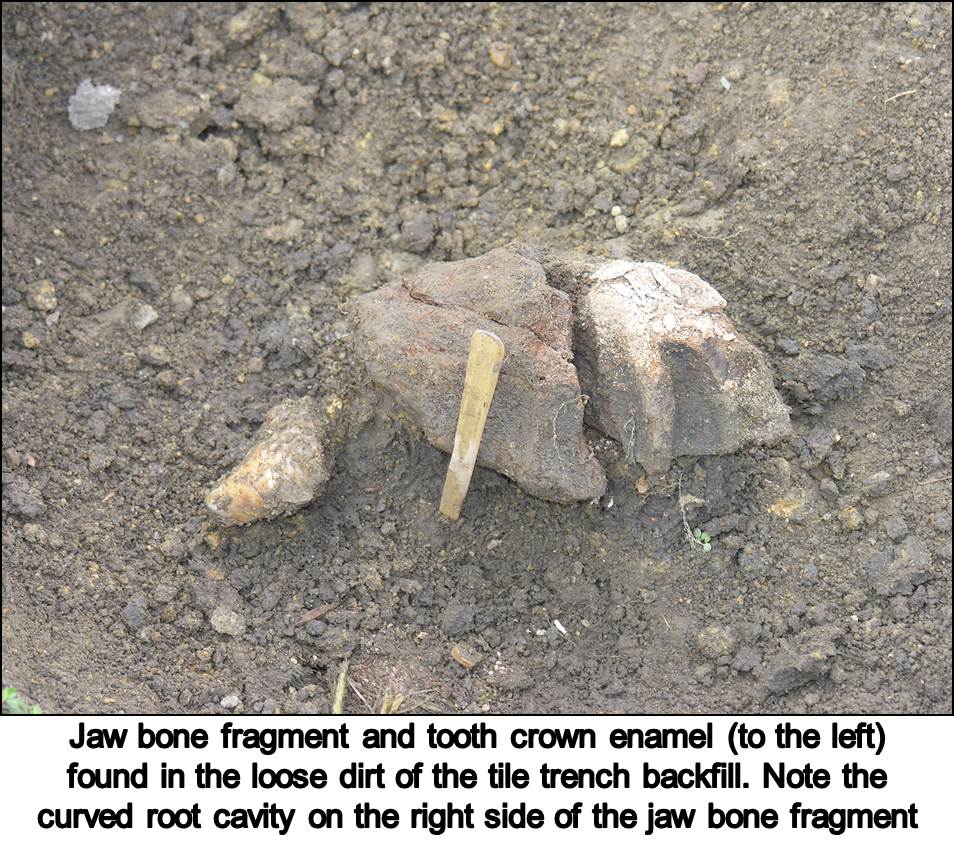While walking along the backfill of a drain tile recently installed in one of his bean fields, a Morrow County farmer noticed what he took as a rather unusual rock. After a little cursory cleaning the rock turned out to be the crown of a mastodon tooth. A little further investigation turned up more tooth fragments as well as fragments of the mandible or lower jaw bone. While not every day occurrences, isolated mammoth and mastodon teeth do turn up from time to time. They are the most durable part of the animals anatomy and can remain intact long after the other skeletal parts have decayed and disappeared. It is also the case that teeth are shed as they become worn and are replaced by new growth from the rear of the jaw. The fact that there was more than one tooth represented in all the enamel pieces and that jaw bone fragments also turned up indicates that the tooth enamel was likely not the residue of an isolated tooth and that there may be more skeletal parts remaining. Is there a complete skeleton there waiting to be discovered? Its hard to say. The find spot was immediately adjacent to a natural pond and the tile was installed to follow a natural swale that drained higher parts of the field into the pond. The tile trench was inadvertently dug through the level where the teeth and jaw bone material were lying, that is about three feet below the surface. A possible scenario is that thousands of years ago the remains of a dead mastodon were somewhere not too far upslope from the pond and over time this material moved downward towards the wetland when the swale acted more like a full time stream. Eventually some of the skeletal members or perhaps the whole carcass would become buried in transported sediments near the edge of the present day pond. To find out if there is more to be found a ground penetrating radar survey was undertaken to see what could be seen. While a mastodon skeleton didnt magically appear there were a couple of large anomalies observed about three feet below the surface and located not too far from where the tooth fragments were recovered. Three feet was as deep as the radar unit would function in the wet soils and it cant be said what might be below that level. A project is planned for next spring to do a systematic excavation of the area to check out the anomalies and to see if there are in fact other remains to be discovered. Stay tuned! Bill Pickard
